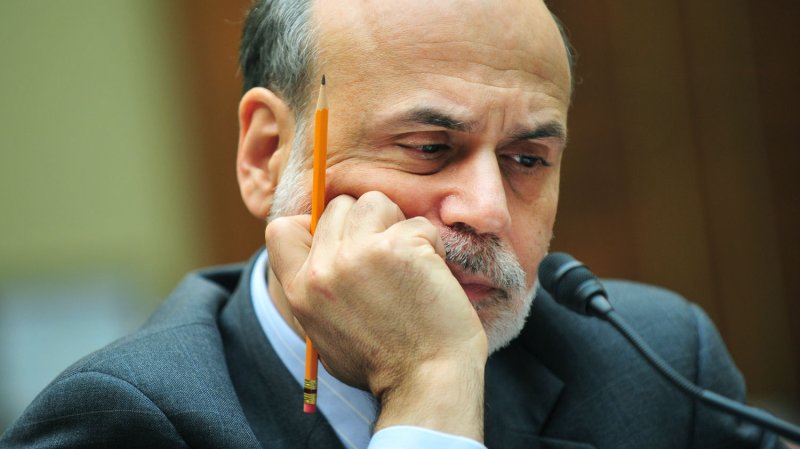U.S. Federal Reserve Chairman Ben Bernanke said Friday subprime mortgages had less to do with the financial crisis than is generally assumed. March 21 file photo. UPI/Kevin Dietsch |
License Photo
NEW YORK, April 13 (UPI) -- U.S. Federal Reserve Chairman Ben Bernanke said Friday subprime mortgages had less to do with the financial crisis than is generally assumed.
Speaking at the Russell Sage Foundation and the Century Foundation Conference in New York, Bernanke said, "data indicate "the total quantity of subprime mortgages outstanding in 2007 was well less than $1 trillion," which was not by itself enough to set up a financial crisis as severe as the one that began to boil over in 2007 and 2008.
"By way of comparison, it is not especially uncommon for one day's paper losses in global stock markets to exceed the losses on subprime mortgages suffered during the entire crisis," Bernanke said.
He said the collapse of the housing market since the financial crisis has erased $7 trillion from the value of U.S. households. However, the dot.com financial boom and bust included losses of $8 trillion, Bernanke said. So the housing market collapse should not have created a much larger rupture in the financial system than the dot-com crisis -- although it certainly did, Bernanke said.
The dot-com fiasco "resulted in a relatively short and mild recession and no major financial instability," he said.
What then caused the financial rupturing that threatened major banks across the country and seized up lending?
In part all of the above, but in part, "shadow banking," Bernanke said.
"Banks … (as they) rely on short-term funding and leverage, they benefit from a government-provided safety net, including deposit insurance and backstop liquidity provision by the central bank. Shadow banking activities do not have these safeguards," he said.
Modern banking was a major cause the financial system collapsed, Bernanke said.
He defined shadow banking as transactions that "fall outside of traditional" safety nets.
"Examples of important components of the shadow banking system include securitization vehicles, asset-backed commercial paper conduits, money market mutual funds, markets for repurchase agreements (repos), investment banks, and mortgage companies," he said.
He emphasized shadow banking represented a growing portion of the financial system that had no established regulatory protections.
"Indeed, the very foundation of shadow banking and its rapid growth before the crisis was the widely held view (among both investors and regulators) that these safeguards would protect shadow banking activities against runs and panics, similar to the protection given to commercial banking by the government safety net. Unfortunately, this view turned out to be wrong," he said.










